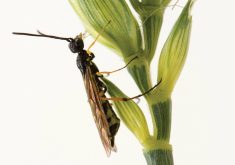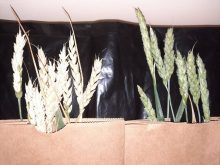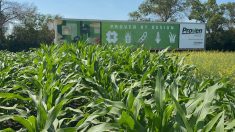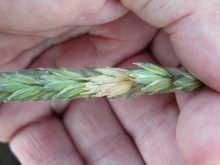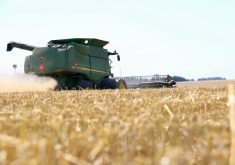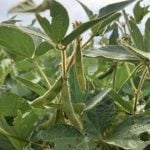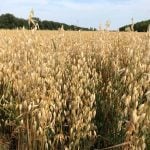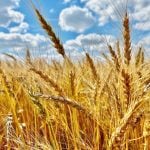If you grew wheat this year, odds are good you’re facing the hard reality of fusarium. What are you going to do with damaged grain? It’s a hard question in a good year, and much harder in a year when fusarium infection is widespread.
Grain infected with Fusarium graminearum can carry vomitoxin (also known as deoxynivalenol, or DON), which in high doses is toxic to animals and humans.
According to Bruce Carriere, president of Saskatoon-based Discovery Seed Labs, it’s too early for definite numbers on fusarium infection, “but the range in durum goes from two to 70 per cent infected,” he says.
Read Also
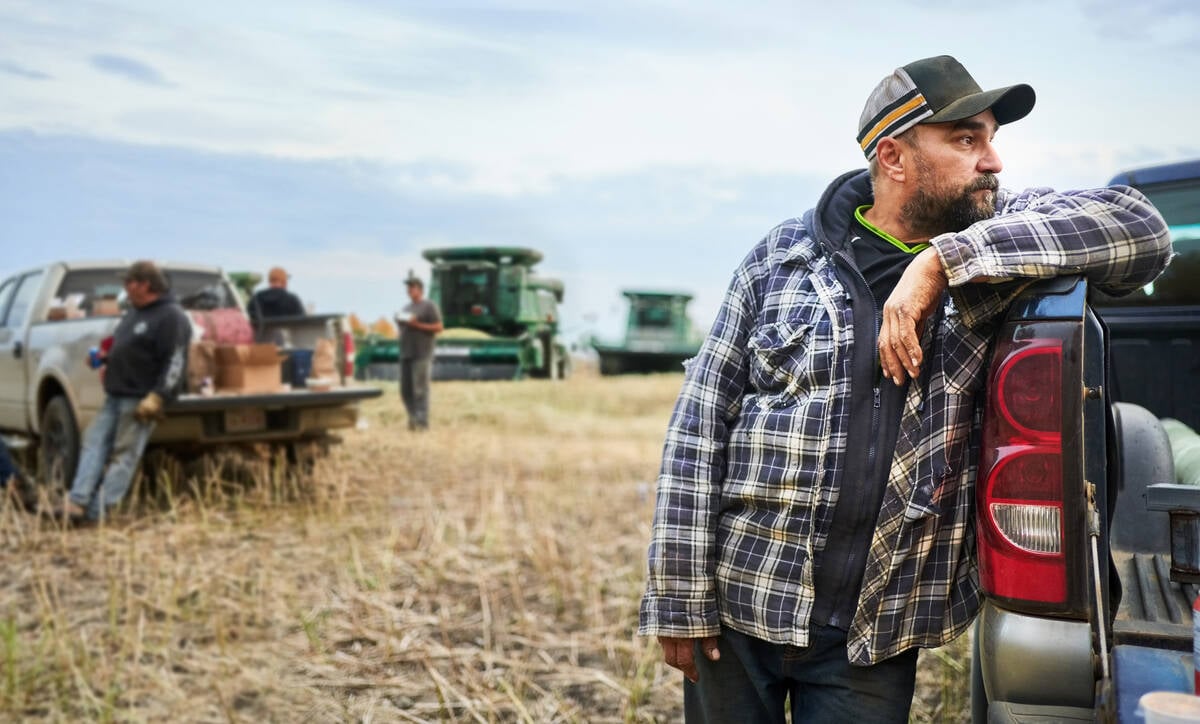
Toolkits help bridge gap in farmer mental health
Efforts to rebuild and repair farms tend to take centre stage following a crisis, but the mental health aspects of such events often inadvertently wind up on the back burner, hence a new resource kit for farmer use.
- Read more: Got fusarium? Handle it safely
“There are some samples in the lab where vomitoxin levels are at 33 parts per million (ppm) — those are extreme examples though. Those are the exception rather than the rule. I do expect vomitoxin levels to be in the five to 10 ppm range.”
Derek Squair, Agri-Trend’s president of marketing, says producers may have fewer marketing avenues due to the lack of good grain for blending. “It depends on the quality the producer has, but it’s going to be tough to move it,” he says.
If you’ve got damaged grain, here are a few rules of thumb for marketing it.
1. Check insurance options
Rob Moss, policy analyst with Saskatchewan Agriculture, advises producers with damaged grain to consult a crop insurance agent as soon as possible.
“The quality factor is an insurable peril under Saskatchewan crop insurance,” he says. “It doesn’t mean you’ll necessarily be in a claim position, but the experts are up to speed and working with you in case you are in a claim situation.”
This year, bringing the professionals into the conversation sooner rather than later is of benefit to the producer, says Moss.
2. Sample and test
Moss says producers should take samples at the bin level to send to grain companies in order to find out their marketing options as soon as possible. “Companies may purchase the grain right off the bat, but they’re more likely to wait to see what the rest of the crop looks like and what the blending options are going to be,” he says.
Vomitoxin levels will be key. Phil Bergsma, FarmLink commodity merchant, says typical milling markets for wheat and durum will accept grain with a maximum of two PPM of vomitoxin. “Going into the hog feed market you’re looking at one PPM,” he says. “Poultry is between four and six ppm, and cattle is up to eight or 10 ppm.”
Testing is crucial. “It’s going to be imperative to take representative samples at the bin at harvest and make sure you’re getting your grades not only from local buyers and elevators but also sending them to a seed lab,” Bergsma says.
3. Clean it up
Moss says you can clean fusarium out of grain using gravity tables or colour sorters, but it can be a very lengthy and expensive process.
To minimize costs, just get just a truckload cleaned as a test, to evaluate the improvement.
“If they’re able to clean it up in a seed plant, and I would say that’s something a lot of producers should be considering, they could be looking at premiums of upwards of $3/bushel more for that grain, or $6 to $6.25 if it would be clean enough grading at three,” he says.
“If they’re on the threshold of making a grade, they should get that grain cleaned.”
4. Store it as a last resort
Bergsma says storing grain on the chances it can be blended off with next year’s crop may not be the best solution.
“The big risk with that is if we hit another high infection year of Fusarium, then they’re in the same boat,” he says. “Up to a max 10 they can sell it into the feed market, obviously not at values the farmer loves, but I’d say it’s a good idea to try selling at least a portion sooner rather than later.”
5. Don’t give up
Grain that is severely infected with vomitoxin may need to be destroyed, although Squair calls this measure “drastic.”
“I’m hoping at some point you can find a use for it,” he says.
Bergsma echoes that producers make every effort to find a home for damaged grain before destroying it. “Phone around with buyers. There are options out there, even though they are few and far between.”





